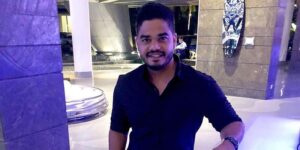In a thrilling new chapter for space exploration, NASA is gearing up to send a second helicopter to Mars, taking aerial exploration on the Red Planet to bold new heights. Following the stellar success of Ingenuity—our very own “Marscopter” that soared above expectations—this next mission promises to dive even deeper into Mars’ rugged landscapes.
Ingenuity’s Stellar Performance
Launched aboard the Perseverance rover, Ingenuity made history on April 19, 2021, by achieving the first powered, controlled flight on another planet. Designed for a mere five flights over 30 Martian sols (approximately 31 Earth days), Ingenuity far exceeded expectations. By January 18, 2024, it had completed 72 flights, covering over 17.2 kilometers (10.7 miles) and accumulating more than 128 minutes of flight time.
Key Achievements of Ingenuity:
- Altitude Record: Reached a maximum altitude of 24 meters (79 feet).
- Speed Milestone: Attained a top speed of 36.0 km/h (22.4 mph)
- Operational Longevity: Functioned nearly three years beyond its initial mission parameters.
Ingenuity’s success has not only demonstrated the feasibility of aerial exploration on Mars but also provided valuable data for future missions. Its flights have offered unique perspectives of the Martian surface, aiding the Perseverance rover in navigating the challenging terrain of Jezero Crater.

Jezero Crater
The Next Chapter: A Second Mars Helicopter
Building on Ingenuity’s accomplishments, NASA is developing a more advanced helicopter for Mars exploration. This new rotorcraft, often referred to as the “Mars Science Helicopter,” is designed to carry scientific instruments, enabling it to conduct detailed analyses of Martian geology and climate.
Anticipated Features of the New Helicopter:
- Increased Payload Capacity: Capable of transporting several kilograms of scientific equipment.
- Enhanced Flight Range: Designed to cover several kilometers per day, significantly expanding the scope of exploration.
- Autonomous Landing: Equipped with advanced navigation systems to land independently after descending from orbit.
This ambitious project aims to address some of the limitations faced by ground-based rovers, such as traversing difficult terrains and covering extensive areas within limited timeframes. By taking to the skies, the new helicopter can access previously unreachable regions, providing a broader understanding of Mars’ diverse landscape.
Why Aerial Exploration Matters
The thin Martian atmosphere, with less than 1% of Earth’s atmospheric density, presents significant challenges for flight. However, aerial vehicles offer distinct advantages:
- High-Resolution Imaging: Capturing detailed images from above aids in identifying geological features and potential signs of past life.
- Efficient Terrain Coverage: Flying over obstacles allows for faster and more comprehensive exploration compared to rovers.
- Support for Ground Missions: Aerial scouts can identify safe paths and scientifically interesting targets for rovers and landers.
Looking Ahead
As NASA prepares for this next mission, the lessons learned from Ingenuity are invaluable. The new helicopter will incorporate technological advancements and insights gained from its predecessor’s flights, aiming to unravel the mysteries of the Red Planet further.
In the words of NASA’s Associate Administrator for Science, Thomas Zurbuchen, “Ingenuity’s success has paved the way for future aerial exploration on Mars. We’re excited to build upon this foundation with our next helicopter mission.”










